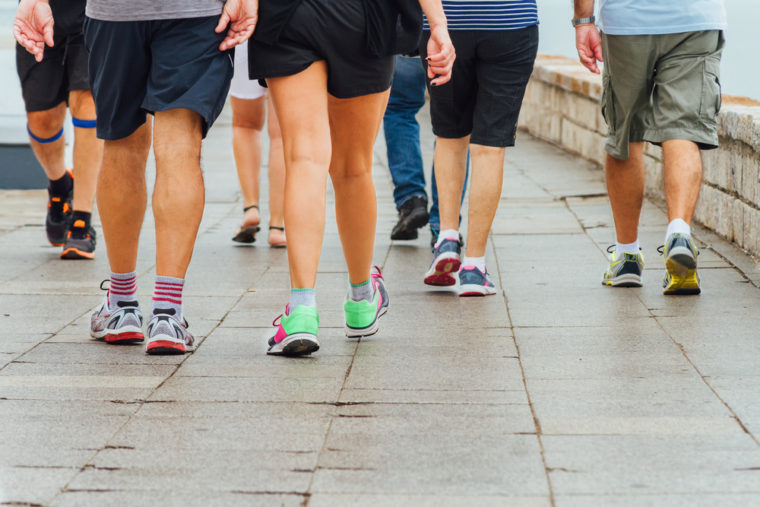The United States earns failing grades when it comes to the number of people walking to work and school plus the number of walkable communities, finds a new national report.
Amy Eyler, associate professor at the Brown School, serves on the advisory panel for the National Walking and Walkable Communities Report Card, which released its report Sept. 14.
The U.S. earned an “F” for children and youth walking behavior, safety, public transportation, institutional policies and pedestrian infrastructure. It earned a “D” for walkable neighborhoods and pedestrian policies. It got a “C” for adult walking behavior.

“Report cards can facilitate change,” said Eyler, an expert on physical activity and obesity and deputy director of the Prevention Research Center in St. Louis.
“When a child brings home poor grades, parents and teachers can develop strategies for the child to do better,” she said. “We have tremendous opportunity for improvement.
“Not only can we do a lot better within each of the factors, but we have the opportunity to create better, consistent surveillance and measurement of these factors so we can have evidence of change.”
Eyler was not surprised by the report’s findings.
“Being in the physical activity research field for two decades prepared me for the outcome,” she said. “The U.S. is very car-centric, with planning and transportation priorities mostly focused on automobiles.”
The advisory panel responsible for developing the report was empaneled by the National Physical Activity Plan Alliance, a nonprofit organization that is committed to ensuring the long-term success of the National Physical Activity Plan (NPAP). The alliance is a coalition of national organizations that have come together to ensure that efforts to promote physical activity in the American population will be guided by a comprehensive, evidence-based strategic plan.
The 2008 Physical Activity Guidelines for Americans recommend at least 150 minutes a week of moderate intensity physical activity, such as brisk walking, for adults.
“Walking for pleasure or transportation counts as physical activity, and decades of research shows that people who are physically active are healthier than those who are not,” Eyler said. “Plus, walking really doesn’t require special skills or equipment.
“If we are going to promote and encourage any physical activity for all ages and abilities, I think our best bet is walking. Although the decision to walk is an individual choice, this decision can be influenced by the way communities are designed and built — and this is where improvements can be made as indicated by the report card.”
The results of the report were presented by Eyler and fellow panel members on Sept. 14 at the National Walking Summit in Minneapolis, Minn.
The full report is available at physicalactivityplan.org/projects/walking/Walking-report-card-FINAL.pdf.
